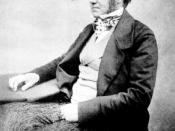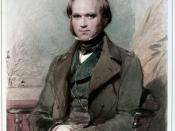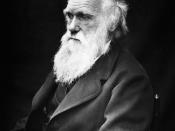Exploring a Change in Views on the Inheritance of Acquired Characteristics
Can a giraffe make its neck longer by stretching to reach higher branches? Most people today would laugh and say "of course not", but there was a time when scientists thought it was possible for an animal to acquire such complex characteristics. The idea of the inheritance of acquired characteristics, introduced by Jean-Baptiste Lamarck, is an evolutionary process that involves organisms changing their phenotypic characteristics in response to changes in their environment and then passing these new traits on to their offspring (Price 1996, 46). Charles Darwin's views on the idea of inheritance of acquired characteristics, apparent by his theory of evolution, can be viewed as a bit short-sighted as compared with a modern view on the subject.
Darwin and Lamarck both believed in evolution, they merely had different ideas about the mechanisms behind the process. Lamarck believed that the variation of animals was caused by their changing needs related to environmental stimuli.
He also believed that an organism's use or disuse of a particular body part would cause it to become bigger and stronger or smaller and weaker, respectively (Price 1996, 46). Darwin said that the variation is due to the heritability of traits. He states clearly in The Origin of Species that he does not believe environment to play a large role in the variability of individuals:
"Instances could be given of the same variety being produced under conditions of life as different as can well be conceived; and, on the other hand, of different varieties being produced from the same species under the same conditions. Such facts show how indirectly the conditions of life must act" (Darwin 1859, 175).
Darwin did agree with Lamarck that the use or disuse of body parts affected its evolution,


